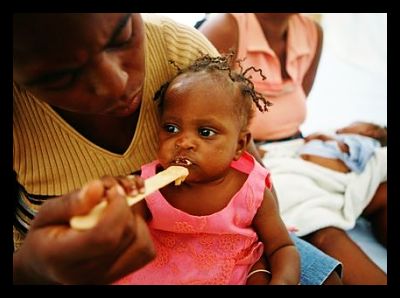Launch of “Feed the Future North” Project in Haiti

USAID has just launched a five year $88 million project dubbed “Feed the Future North” that is anticipated to increase the incomes of over 40,000 farming households in northern Haiti.
In a country where over 80 percent of the population is living under the poverty line, and 60 percent are farmers, the agricultural sector is key to developing the Haitian economy. Agricultural production makes up 25 percent of the country’s GDP, but especially after the tragic earthquake in 2010, farmers are having trouble maintaining sustainable farming practices.
Over the last three decades, flooding of farmlands in Haiti has increased, and water supplies have become scarcer, making it harder to produce crops. Even with the majority of people working in agriculture, Haiti still has to import more than 50 percent of its food.
USAID specifically plans for the project to increase the production of beans, rice, corn, cocoa and plantains, which are all key agricultural products for Haiti. It will help farmers do this by providing support in erosion protection and agricultural infrastructure, expanding financial services to local farming companies, stabilizing watersheds that support farmland, and improving roads that lead to quality farmlands that are difficult to maintain due to their inaccessibility.
Feed the Future North also plans to use new innovative approaches to increase agricultural production and incomes. These include plans for cellphones to make it easier for farmers to receive new information on farming practices, and to implement mobile money, which makes it easier for farmers to manage their transactions through a mobile device instead of with cash or credit cards.
But even with these innovative plans, it is still difficult to create long term, sustainable change in just 5 years. That’s why the project is projected to fund an additional $40 million beyond the original $88 million budget for contracts with local partner companies to continue the project’s work in the years following the project’s completion.
This is not the first of USAID’s “Feed the Future” projects in Haiti. The Feed the Future West project began in 2009, and has helped more than 30,000 farmers improve their seeds and fertilizer, and implement new agricultural technologies. As a result, participating farmers were able to increase their gross incomes from $200 per hectare to more than $1,100 per hectare.
– Emma McKay
Source: CIA World Factbook, USAID, USAID Feed the Future West
Photo: Save the Children
